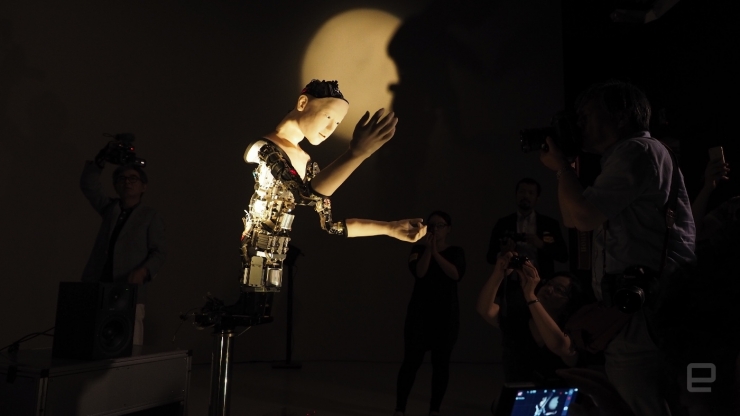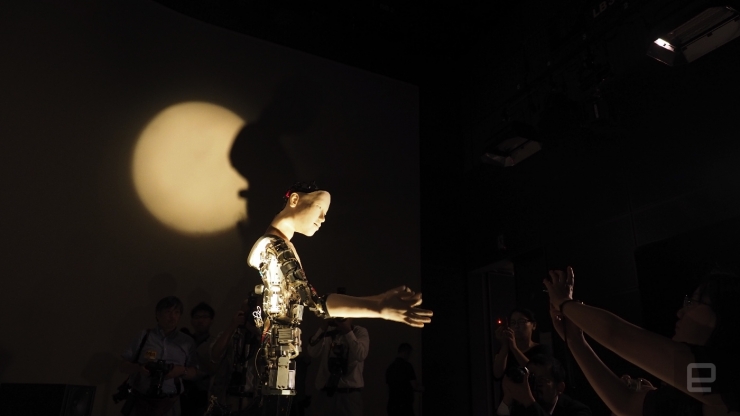
According to the traditional thinking, the robot is run according to a section of code written by the scientist. The motor is controlled by the code, how the code is written, and how the robot moves. This is considered to be one of the biggest differences between the robot and humans. However, with the continuous development of artificial intelligence technology, backed by big data and deep learning, robots that are more similar to humans are also common. For example, AlphaGo is an example. Now, a group of scientists from Tokyo and Osaka, Japan, have taken a big step forward in this direction.
Recently, the National Science Museum of Japan exhibited a new robot named Alter. The biggest difference from the other robots in the museum is that Alter not only has an anthropomorphic face, but also an anthropomorphic heart.

As shown in the picture, Alter is not currently a humanoid robot with a full double foot. It only has an upper body and has a bare mechanical structure except that the face and the arm are surrounded by bionic materials. Its most important and most distinctive feature is a built-in Central Pattern Generator (CPG). Based on the Izhikevich neural network technology, the CPG can extract multiple sensor data distributed in various parts of Alter's body in parallel. Comprehensive analysis of the data for each road, through the body of 42 pneumatic devices, driving Alter to spontaneously make various anthropomorphic actions, the so-called "spontaneous consciousness", rather than step by step according to the established code as traditional robots.
Currently, Alter can respond to changes in surrounding objects such as temperature, humidity, and acoustic wave intensity by detecting various dimensions of information. For example, Alter spontaneously begins to tremble when it detects multiple people around him. In addition, Alter can also sing according to the movements of his fingers (it is only a simple sine wave change so far) and can easily talk to ordinary people for more than 10 minutes.

Although Alter's current response to external stimuli is ridiculous, random and bizarre, visitors have said that this does not prevent Alter from giving people a "living" feeling.
Professor Kouhei Ogawa of Osaka University stated: "This project fills the gap between traditional programming robots and robots capable of spontaneous movement. Although Alter does not seem to be human (more like a "ghost" or "ghost") so far. Its movements are also weird, but it is obviously more 'soul'. At the same time, Professor Kouhei Ogawa said: "Until now, letting robots speak or interact with human beings for only a few minutes, both of which contain huge input from scientific researchers, the appearance of Alter obviously means a great progress."
Alter will be exhibiting at the National Science Museum in Japan for a week, and R&D staff hopes that it will inspire other teams in this area to generate more new ideas, thereby promoting greater development of artificial intelligence robots.
Source: engadget